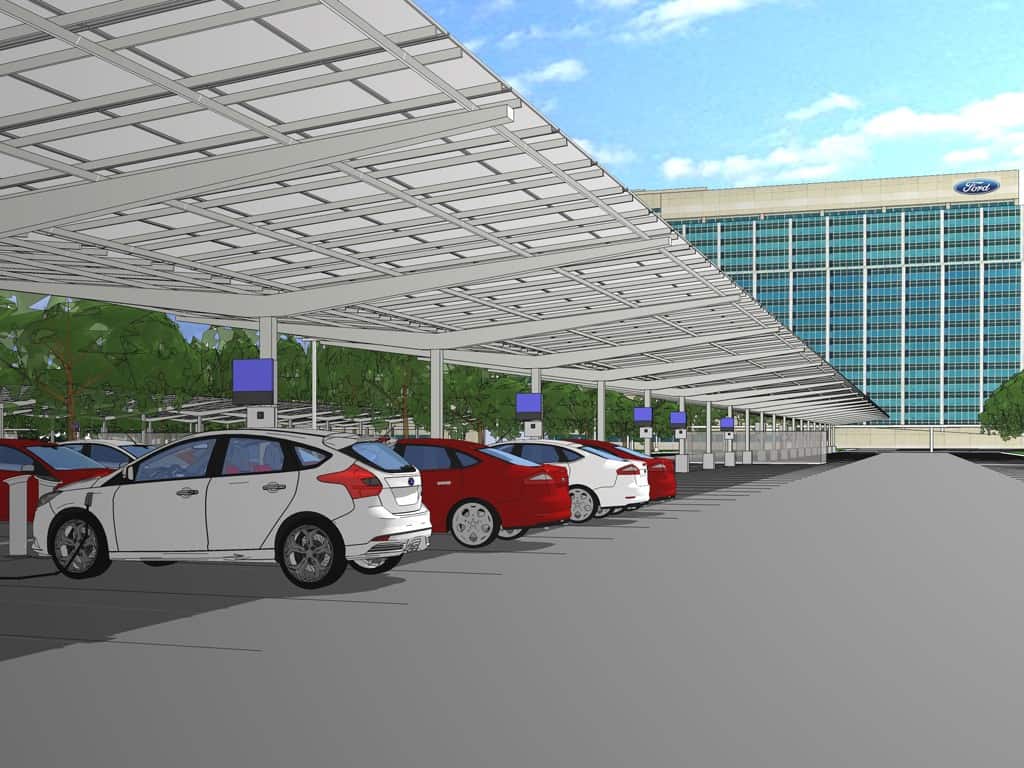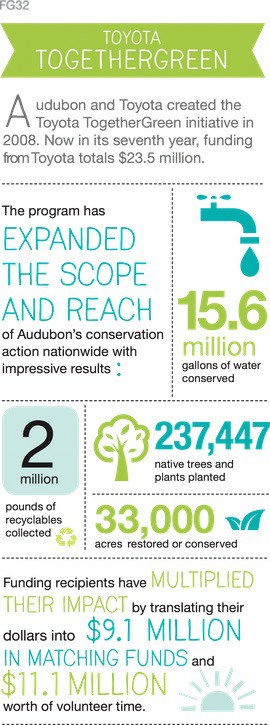 Many automakers, sellers and service providers are helping the environment in time for Earth Day. Automakers are trying to reduce energy in making cars and running offices. One of the best ways to cut down on emissions is electric vehicles, however due to the lower price of gas sales are decreasing slightly.
Many automakers, sellers and service providers are helping the environment in time for Earth Day. Automakers are trying to reduce energy in making cars and running offices. One of the best ways to cut down on emissions is electric vehicles, however due to the lower price of gas sales are decreasing slightly.
Less Energy for Hot Looking Paint Jobs
A lot of energy goes into making cars. GM reports that the painting process of cars can use 70% of the energy to make a car using 2.5 megawatt hours or the electricity bill of a typical U.S. home for nine weeks.”
GM began using a water-based “three-wet” paint process in with no need for a primer bake oven in 2011 at the Orion Assembly where the Buick Verano is made. Three layers of paint are applied while still wet before being baked. This plant now only uses about 1 megawatt hour of energy to paint each vehicle.
Fourteen General Motors plants around the world achieved the U.S. Environmental Protection Agency’s ENERGY STAR Challenge for Industry, collectively cutting energy intensity by an average of 17 percent.
Solar Car Ports and Roof Plants for Ford World Headquarters
Ford Motor Company partnered with DTE Energy to build Michigan’s largest solar array at Ford World Headquarters. The solar carport is expected to generate 1.13 million kilowatt-hours annually enough energy to power 158 average-sized homes for a year. The solar array offers360 covered parking spaces and 30 EV charging stations. The roof is covered with 11 plant species that act as insulation, lowers the amount of heat entering the building by 70 percent, reducing cooling costs by 5 percent.
Green Car Buyers Pay More Green Top Ten Green Car Sales
In honor of Earth Day, Experian Automotive found that green car buyers are more likely to pay cash and showed what green cars are selling. More than 18 percent of consumers that purchased a “Green” vehicle paid in cash, compared to 15.24 percent of those that purchased a gas-powered vehicle..
In 2014 the percentage of new registered alternative-powered vehicles experienced a slight decrease year-over, going from 4.1 percent in 2013 to 3.9 percent in 2014.
The Toyota Prius was the top seller at 24.7% followed by the Prius C at 7.4%, Ford Fusion 6.9%, Toyota Camry 6.8%, Nissan Leaf 5.8%, Toyota Prius V 5.7%, Ford C-Max 4.2%, Hyundai Sonata 3.8 %, Chevrolet Volt 3.5% and Lexus CT 200h 3.3%.
- The average loan for an alternative-powered vehicle in 2014 was $27,288, compared to $27,817 for a gas-powered vehicle.
- In 2014, the average monthly payment for an alternative-powered vehicle was $468; gas-powered vehicles were $473.
- The average lease payment for an alternative-powered vehicle was $358, compared to $407 for a gas-powered vehicle.
- The top five states with the highest percentage of alternative-powered vehicle registrations in 2014 were California, Hawaii, Oregon, Washington and Georgia.
Research Suggests Rebates when EVs are Sold, Better Batteries and More
The National Research Council issued a report with suggestions to encourage the sale of electric vehicles. Vehicle prices, battery technology, and inadequate consumer knowledge are some of the barriers preventing widespread adoption of plug-in electric vehicles.
The report recommends:
- The current $7500 tax plug-in electric incentives should continue beyond the production volume limit.
- The federal government should consider a point-of-sale rebate instead of the tax credit.
- The federal government should work with state governments to adopt a policy in which plug-in vehicles remain free from special roadway or registration surcharges for a limited time.
- The government should continue to invest in fundamental and applied research to expedite the development of low-cost, high-performance batteries to increase the all-electric range and reduce vehicle cost.
- Public-service advertising campaigns should boost awareness of electric and plug-in hybrid vehicles and their benefits in key markets.
The study found that the home is the most important location for charging infrastructure, followed by the workplace, in and around cities, and, least important, on interstates.Rate structures that encourage owners to charge vehicles when the cost of supplying energy is low would also be of benefit to the utility.
Why We Want More EVs
Electric vehicles are a highly efficient mode of transportation and have zero emissions. Beyond wiper blades and tires, all-electric vehicles require little maintenance, saving time and money.
The California Air Resource Board estimates that more than 9,000 California deaths a year are caused by air pollution from cars and trucks. An American Lung Association and Environmental Defense Fund argues that a transition to electric cars in California would prevent 600 heart attacks and 38,000 asthma attacks annually in California.
 Don’t Worry About Toyota Batteries, Their Being Used a Yellowstone – Toyota Supports Earth Charities
Don’t Worry About Toyota Batteries, Their Being Used a Yellowstone – Toyota Supports Earth Charities
Toyota used Camry Hybrid nickel-metal hydride battery packs to create a battery storage system to power the Lamar Buffalo Ranch field campus in Yellowstone National Park. The batteries store power generated by solar arrays and a micro-hydro turbine. The reuse of hybrid batteries is expected to double their useful lifespans before being recycled.
The annual National Mayor’s Challenge for Water Conservation is supported by Toyota.
The National Audubon Society and Toyota created the Toyota TogetherGreen initiative in 2008 through a $20 million grant. With this support, Audubon has expanded the scope and reach of its conservation action nationwide.